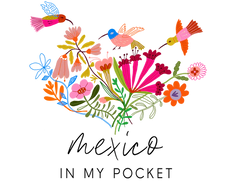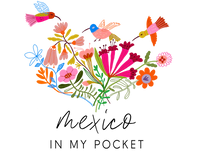
Alebrijes (pronounced: ah-leh-bree-hez) have come to represent the beauty, mystery, and magic of Mexico.
Thanks to movies like Disney's Coco, people around the world now recognize this Mexican folk art and are eager to discover their own spirit animal.
While it's wonderful that movies like Coco have shed light on this beautiful Mexican folk art, the movie doesn't go into detail about where the tradition originated from.
Instead, it falsely depicts alebrijes as "spirit guides for the afterlife." Contrary to what many might think, alebrijes are actually not a centuries-old Mexican folklore and they do not stem from Day of the Dead traditions.
In fact, alebrijes were invented during the 20th century and were made popular by Mexican artists Diego Rivera and Frida Kahlo.

WHO INVENTED ALEBRIJES?
Today's alebrijes are traditionally carved from wood, handpainted, and can be found in Oaxaca, but the originals were made from papier-mâché and invented in Mexico City.
In 1936, 30-year-old Mexican papier-mâché artist (also known as a cartonero) Pedro Linares, invented the fantastical creatures after becoming sick and hallucinating strange animals, including a donkey with wings and a rooster who had the body of a frog.
In the dream, the animals chanted a nonsense word, which today we know as “alebrijes”.
After waking up from the dream, Linares could not stop thinking about the creatures and the word "alebrijes".
Knowing he was skilled in papier-mâché art, he brought his dreams to life by recreating the creatures and sharing them with his family and friends.
Eventually, his art work caught the attention of famous artists Diego Rivera and Frida Kahlo who commissioned him to create specialized alebrijes for them.


What is the Purpose of These Animals?
The purpose of these animals depends on who you ask.
Overall, alebrijes celebrate and honor the magic of creativity, and the beauty of a more ethereal and spiritual world.
Alebrijes are special because no two are ever alike. Every artisan who designs one gives the spiritual animal its own unique traits and personality. Some have wings, while others have antlers, horns, and/or fins.
For example, the original alebrijes that Pedro Linares created were more fantastical and otherworldly––sometimes even frightening.
While Oaxacan alebrijes (more commonly seen today) feature realistic interpretations of animals and are less monsterlike.
Artisans will also typically use vibrant colors and shapes like stripes, polkadots, flowers, flames, and more.
Their features are always exaggerated or contorted, emphasizing their playful and mystical nature and their facial expressions can vary. Some are silly, while others are more peaceful and loving.
Universally, alebrijes remind us not to be afraid to pursue adventure, new opportunities, and to remember to see beauty and magic that surrounds us.

shop new arrivals

Magical spirit guides of mesoamerica


Though alebrijes are not a centuries old tradition, when we look back at history, we can find evidence that Mesoamerican cultures did believe in a version of magical spirit guides—known as "tona" and "nahual".
In the Zapotec culture, the tona (meaning animal and/or protective spirit), was assigned to each individual based on their birthday.
The traditional Zapotec calendar, includes a total of 13 months divided by 20 days with each day of the month dedicated to a specific animal or tona.
Some of the animals include coyotes, lizards, armadillos, turtles, snakes, rabbits, deer, frogs, monkeys, owls, eagles, jaguars, butterflies, fish, hummingbirds, and snails.
The nahual (also spelled nagual), on the other hand, is associated with the Mayan, Toltec, and Mixtec cultures.
This refers to the ancient mythology that certain men are capable of shapeshifting into different animals.
According to Mesoamerican beliefs, men would escape into nature, fall asleep, and the animal which appeared in their dreams would become their official nahual (nah-wahl).
It's important to note that the Mesoamerican belief of nahuals and their role has changed over time and can vary depending on who you talk to.
For example, some might say that nahuals transform themselves at night to do evil. While others, might suggest that these shape shifters communicate with nature to perform healing.
Regardless of the discrepancies, there is one common and influential theme which derives from this ancient Mesoamerican belief, which is that animals and humans are capable of fusing together.
It is both powerful and fascinating to see how the concept of fantastical creatures, protective spirit animals, and shapeshifting men have influenced Mexican culture and the beautiful work that Mexican artisans continue to create today.

shop books


WHERE CAN YOU FIND ALEBRIJES?
Although the creator of alebrijes was from Mexico City, the alebrijes that are famous today are mostly developed in San Martin Tilcajete, Oaxaca, also known as the "land of alebrijes."
In this small town, visitors will find families of artisans who are dedicated to handcarving and painting these beautiful magical creatures.
Two of the most famous alebrije artisans are also located in this small town.
Jacobo and Maria Angeles, who have been elaborating alebrijes, since 1994 are master artisans in the craft, who now dedicate their time to teaching other members in the community how to create alebrijes.
In 2021, they were in charge of developing the larger than life alebrijes for Rockefeller Center's "Mexico Week" in New York City.

How Do You Connect To Your Spirit Guide?
Connecting to your spirit guide can happen a number of ways.
Some people will find their spirit guides at birth, while others may connect to them in a dream.
A spirit guide can also be an animal that you have connected with in the living world. For example, I would consider my dog Holly my real life spirit guide.
Alebrijes can also connect with souls who share similar characteristics and skills.
For example, someone who has a beautiful singing voice may be connected to a bird.
Someone who is fierce, independent, and strong may be connected to a jaguar.
Those who are passionate are said to connect with dragons.
Individuals who are tenacious have the spirit of a coyote or wolf.
People who are loyal and protective have the spirit of a dog.

All of this being said, the Zapotec calendar continues to be the primary way in determining your spirit animal.
The calendar was made with a complex cosmology which used spirits, symbols, and animals associated with different days.

shop paper flowers

How To Discover Your Alebrije (Spirit Animal)

As mentioned earlier, there is not one direct path to discover your spirit animal.
Everyone's tona and nahuale is different and is determined by their exact birthdate and the year they were born.
When I visited Oaxaca, the artisans used the Zapotec calendar to confirm that my tona (protective spirit) is the turtle and my nahual is the coyote. And my sister's tona is the eagle and her nahual is the serpent.
The best and most accurate way to discover your spirit animals by birthdate is to travel to Oaxaca where they can do an accurate reading.
If you're interested in a more casual and less formal reading, we found this fun website "Silencio" that allows you to enter your birthday (month, day, year) and it will immediately give you an image of your spirit animals as well as a description of what each one represents in you.
It is important to note that this website does not use the Zapotec calendar for reference. When I put my birthdate into this website, it told me I was the jaguar and butterfly, but as I mentioned earlier my Zapotec spirit animals are the turtle and coyote.
Nevertheless, it's still a fun website to use for inspiration and to learn more about the process of spirit animals.
Have you found your spirit animal? If yes, let me know which ones you are in the comments below!

























Leave a comment